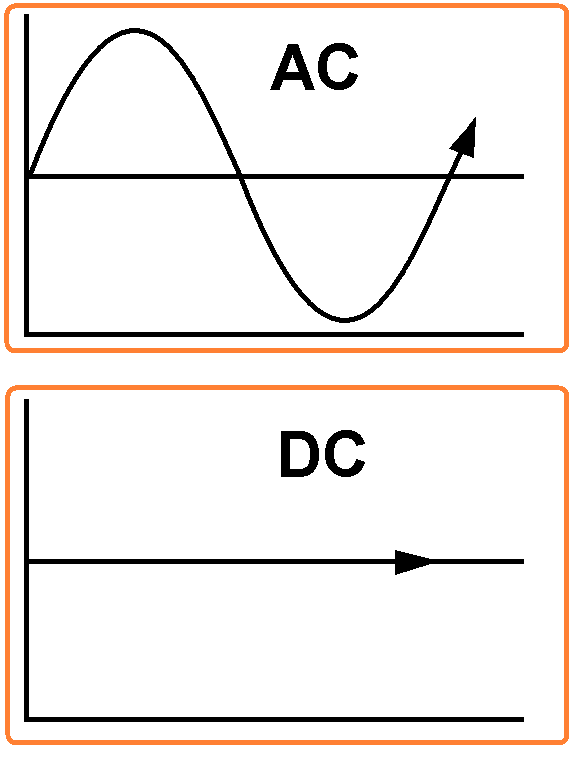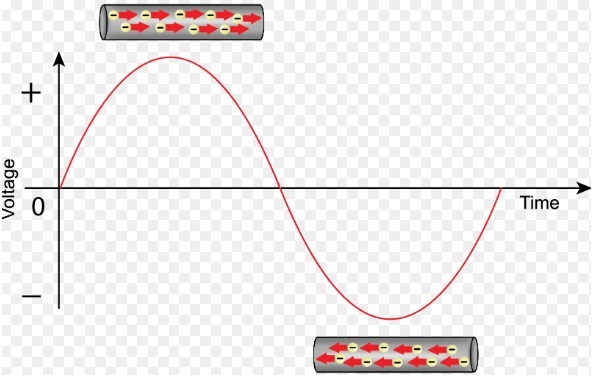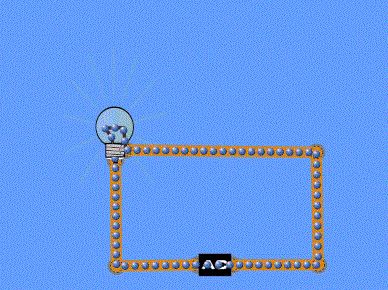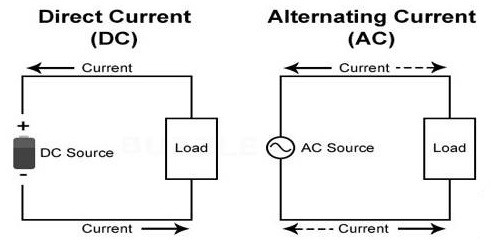We all are aware of the basic definition of Direct Current (DC) and Alternating Current (AC). There are particular differences between the two and also there are disadvantages, drawbacks, or advantages of AC over DC. We will explain the advantages in this post and also some definitions of them. Let us explore more about them.
What are the Advantages of AC over DC?
The advantages of AC over DC are several, but the main of them are presented here briefly:

The production of alternative current is less expensive than the DC system. AC devices are robust, simple, useful, and do not need much attention for their maintenance and repairs during their operation. A wide range of voltages can be achieved by using some transformers in AC systems. The magnitude of the current can be decreased by employing a conductor or an inductance without any considerable waste of energy. AC systems can easily be modified into DC type by using rectifiers. When AC form is used at higher voltages in long-distance applications, the line wastes are low in comparison with a DC transmission.
Alternating Current Definition
Alternating current or AC is the particular form of electricity generally employed in homes and businesses around the world. While direct current or DC electricity moves in one direction within a wire, AC electrons modify their direction in a forth-and-back motion. The direction changes between 50 and 60 numbers per second, according to the electric rules of the country. Alternating current is made by an electric generator, which specifies the frequency.

What is considerable about AC type is that the voltage can be actually modified, so making it more desirable for long-distance applications than DC form. But also, AC can utilize inductors and capacitors in the electronic system, permitting for a broad range of applications.
Questions you may have include:
- What is the exact definition of AC and DC electricity?
- Why do we utilize AC instead of DC?
- What are the advantages of AC over DC?
What is the Alternating current?
Alternating current (AC) is the format of electric current produced by various power plants and utilized by most power distribution setups. An alternating current is less expensive to produce and has fewer energy wastes than a direct system when using electricity in long distances. In comparison with direct current, the amperage and direction of AC type vary many times in a second.
Properties of Alternating Current
An alternating current will transport the direction of flow charge based on the region (50 times a second in Europe (50 Hz) and 60 times a second in North America (60 Hz)). This is generally happened by a sinusoidal wave which can vary voltage and current that changes directions, create a periodic movement for the current. While this current is flowing forth and back many times in a second, the energy can flow continuously without any interruption from the electronic devices to the power plant.
An important advantage of alternating current is that its voltage can be simply changed relatively employing a transformer, which permits power to be used at very high voltages before modifying to safer voltages for residential and commercial usages. This reduces energy losses, as presented below (see residential household diagram for more details).

{P}_{lost}={I}^{2}R
The energy transmitted down within the line has another equation:
{P}_{transmitted}=IV
where P is the term of power, either wasted or transmitted and is sensed in Watts, I is the term of electric current within the wire, detected in Amperes, V is the expression of the voltage, sensed in Volts, and R is the resistance value, detected in ohms.
As seen in the first formula, the power wasted by transmission is related to the square of the current within the wire. So, it is suitable to reduce the current within the wire so that the waste of energy is minimized. Of course, a reduction of the resistance would decrease the energy lost as well, but the current has a larger influence on the energy waste because of its amount being squared.
The next equation: if the voltage is improved, the current is reduced relative to transmit the same energy. As a result, the voltage within transmission wires is very great, which decreases the current, which in turn reduces the power lost in the transmission process. This is the best reason to prefer alternating current over direct current for the transmitting process of electricity, as it is much cheaper to modify the voltage of the alternating current.
Main Uses and Advantages of Alternating Current
Most instruments (for example large factory dynamos) that are straightly joined with the electrical configuration work with alternating current and electrical networks in homes and commercial places use alternating current. Instruments that need direct current, like laptops, generally have an AC adapter that transforms alternating current to direct form.
Alternating current is the optional current generally as it has several clear advantages in comparison with direct type. For a full exploration of the differences between direct current and alternating current, see this post on our blog. Some advantages include:
Efficient and cheap voltage stepping by employing the transformers. As discussed before, this allows for improvement of energy efficiency in electrical transmission with powerlines. This efficient transmission helps energy companies and the consumer to save money and helps decrease pollution because power plants do not require more fuel. Also, low maintenance costs of particular types of AC motors like high-speed types reduce the price of them. They are also easy to control the current with a circuit breaker generally every 1/2 cycle. For instance, a control breaker may interrupt about 1/20th as much DC as AC type.
Key Advantages of AC over DC
- We all understand that we use AC type in our offices or homes and we utilize this supply by transmitting the process of AC form over long paths.
- AC type can be transmitted employing a step-up form of transformers but direct current cannot be transmitted by this solution.
- The AC is simpler to produce than DC. It is also less expensive than DC to generate.
- The AC systems have higher efficiency than DC such as ac generators.
- The waste of power is negligible for AC during transmission.
- The AC type can be simply converted into DC form.
- The modification of AC can easily be operated using particular transformers either step-up type or step-down form.
- The magnitude or value of alternating current can be easily reduced without the waste of extra energy. This can be performed by employing a choke coil.
These are the key advantages of AC over DC. If you want to explore more, please visit this complete video.
Buy Equipment or Ask for a Service
By using Linquip RFQ Service, you can expect to receive quotations from various suppliers across multiple industries and regions.
Click Here to Request a Quotation From Suppliers and Service Providers
Read More on Linquip
- Why DC Current Is Not Used In Homes
- What Is the Advantage of AC Power Transmission
- What is the benefits of AC in Long-distance Transmission?
- What is AC Circuit and Its Characterization?
- What are the Disadvantages of Direct Current?
- What Is the Advantage of AC Power Transmission
- What is the benefits of AC in Long-distance Transmission?
- HVDC vs HVAC Transmission Systems- Difference between them
- Difference Between Resistance and Impedance- Resistance vs. Impedance




Who actually write these articles?
I see a light bulb and the author says that “AC i cheaper than DC”
-Did he miss that new light sources are LED based and they use DC.
Same thing with energy production, author claims that “AC is cheaper than DC”
-Did he miss that the fastest growing energy production (and cheapest) is solar energy (Photovoltaic) and the solar panels produce DC
Low, quality of these articles!
Dear Stefan,
Thank you for your contact with our website.
We are pleasure to see your beneficial comments in other posts.
Thanks a lot
I think we should see it from the wider perspective. The majority of the world energy is now produced from fossil fuels. Those coming from solar power and other renewable sources still make up very small portion of the generation. Also, we still have to convert the DC into AC to transport and distribute it to long distances.
So, I think the bloggers explained its advantages very well.
Thank you!